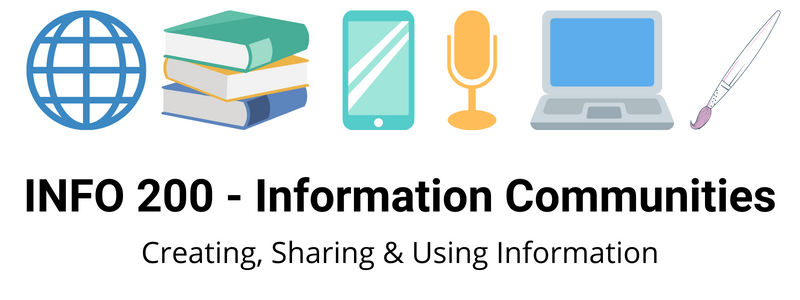APA (short for “American Psychological Association”) style is the standard citation convention used for most social science research including information science, and the convention you will be using for the majority of your assignments throughout your iSchool experience. Like any writing convention, it can take awhile to get used to the detailed formatting rules.
Here is a basic outline for better understanding the various types of “In-Text Citations” in both narrative and parenthetical formats:
| Type of Citation | Narrative Format | Parenthetical Format |
|---|---|---|
| One work by one author | Walker (2007) | (Walker, 2007) |
| One work by two authors | Walker and Allen (2004) | (Walker & Allen, 2004) |
| One work by three or more authors | Bradley et al. (1999) | (Bradley et al., 1999) |
| One work by six or more authors | Wasserstein et al. (2005) | (Wasserstein et al., 2005) |
In APA style, including these types of in-text citations is very important — as it helps not only to prevent plagiarism, but also to refer our readers to the more complete bibliographic reference listing at the end of individual blog posts and research papers. In order to better guide our readers through our academic research and avoid plagiarism, please be sure to create an in-text citation whenever you quote directly (or paraphrase) another reference work in your research. As we see in the table above, there are two main types of in-text citations: narrative and parenthetical.
Narrative Citations
Narrative citation is when you include the author’s name in your text as you reference their quote (or paraphrase their work) in your own research. For example, when highlighting the following chapter from Hirsh’s text in a bibliographic source — notice how we also reference the authors of the chapter in question:
Fisher, K., & Bishop, A. (2015). Information communities: Defining the focus of information service. In S. Hirsh (Ed.), Information services today: An introduction (pp. 20-26). Rowman & Littlefield.
Here is an example of an in-text narrative citation:
As stated by Fisher and Bishop (2015), the articulated “community needs, behaviors, and assets should drive the development, implementation, and evaluation of information services” (p. 20).
Parenthetical Citations…
Parenthetical citation utilizes the author-date listing when it is not easy to use a narrative citation and directly identify the authors’ names in your research. The correct format includes names, dates, and pages in parentheses within the body of the text. For example, when referring to Dresang and Koh’s work in a bibliographic reference — be certain to list the names of both authors:
Dresang, E.T., & Koh, K. (2009). Radical change theory, youth information behavior, and school libraries. Library Trends 58(1), 26-50. https://doi.org/10.1353/lib.0.0070.
Here is an example of an in-text parenthetical citation:
In the age of Web 2.0 and participatory culture, radical change theory presents a number of salient ideas which strive to illuminate not only the information seeking behaviors of youth, but also the overwhelming complexity of ongoing transformations present in our everyday school library systems (Dresang & Koh, 2009, pp. 26-50).
Luckily, there are several resources to help you learn and use the 7th Edition APA style:
- Purdue’s OWL (Online Writing Lab) is a comprehensive resource for APA formatting rules and writing tips. APA 7 examples and materials are now included.
- Purdue’s OWL also provides a general overview of Changes in the APA 7th Edition, as compared to the APA 6th edition.
- Watch this Introduction to Citation Styles for APA 7th Edition to help familiarize yourself with formatting for in-text and reference list citations.
- The Citation Machine helps you generate and format citations in APA (or other common citation formats). While this can be a huge time saver, be sure to also double-check your citations against the APA manual. Currently, the tool only creates APA 6 citations.
- Some additional bibliographic management options include: Zotero, RefWorks, EasyBib, EndNote, and Mendeley.
- SJSU Writing Center provides a convenient APA General Citation Guide for the 7th Edition.
- APAStyle has a variety of quick reference tools, like the following Reference Guide for Journal Articles and Books.
- WI+RE is a learner-led community at UCLA focused on helping everyone succeed in their writing and research projects. Check out their Research Handouts for student academic writing. While some of the resources are specifically for students at UCLA, others are helpful for student research approaches in general.
Staying organized and by keeping good track of your citations can be a big time saver especially when paper deadlines loom near. Besides using a citation manager such as BibMe or EasyBib, a couple of other time-saving tips you might find helpful:
- Create an APA-formatted template Word document that includes correct title page, page numbers, margins, font, and bibliographic indentation. Whenever you begin a new paper, simply use the template and “Save as”. This will save you formatting time for each paper you write.
- Make sure each reference you use in your paper is listed in your bibliography and each source listed in your references is referenced in the body of your paper. As you research your topic, keep a running reference list. When it comes time to write your paper, you can add or check off each reference as you use it.
For more information on APA 7.0 Style for In-Text Citations, please see: https://infocom.hyperlib.sjsu.edu/assignments/assignment-helper-apa-style-for-in-text-citations/
